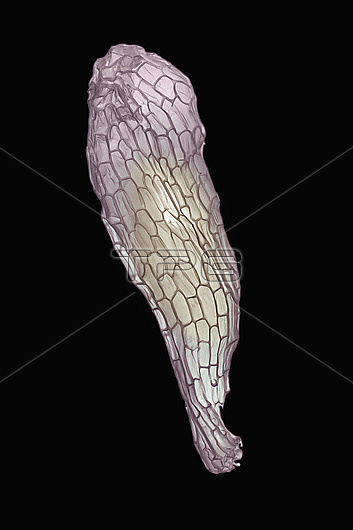
Scanning electron micrograph of a dust seed of Epipactis palustris, the marsh helleborine. The picture shows the thin paper-like seed coat (testa) enclosing an air-filled space in which a small group of cells ( the pro-embryo ) is attached to the thin end of the seed coat by a stalk, the suspensor. The seed is small and light; just over 1mm long, weighing about 8蝷置. Orchid seeds are dispersed by air currents; commonly to distances of a few km; exceptionally over thousands of km. Lacking a stored food source, germination requires the seed to be infected by a fungus (mycotrophy); in the seed here, this occurs via a pore at the base of the testa. The fungus feeds the initial growth of the embryo. This survival strategy appears hazardous, but it is successful due to energy efficiency. Calculations suggest that the energy used to grow one coconut could produce 100, 000, 000 orchid seeds
| px | px | dpi | = | cm | x | cm | = | MB |
Details
Creative#:
TOP26580591
Source:
達志影像
Authorization Type:
RM
Release Information:
須由TPG 完整授權
Model Release:
N/A
Property Release:
N/A
Right to Privacy:
No
Same folder images:

 Loading
Loading